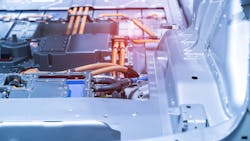Weighing Current-Sensing Options in EV Applications (Download)
Multiple points within an electric vehicle (EV) or hybrid EV (HEV) require accurate and frequent current measurement, and a wide range of current-measuring options exist to address this need. When making a selection, the whole complex design environment of the vehicle should be considered, starting with a clear understanding of what must be measured, why, and how often, as well as the level of accuracy.
In addition, it’s important to have a clear grasp of operating environment factors such as temperature range and vibration. And, of course, the dimensional, weight, and cost budgets are equally critical in creating a practical solution.
